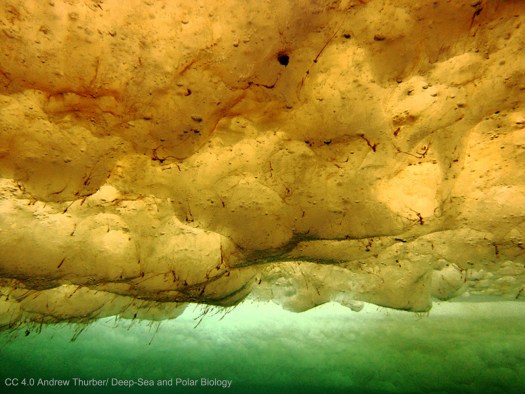
Have you ever wondered how animals that live near Earth’s North and South Poles survive? What do they eat, and how can any kind of food chain exist? The answer to this is ice algae.
Unlike most plants, algae do not have flowers, roots, stems, leaves, or vascular tissue. However, ice algae, like most plants, provide the starting point for a food chain. In this case, it is a food chain in very cold places. Tiny krill, penguins, seals, polar bears, and blue whales all depend on ice algae to survive. In 2016 Dr. Thomas Brown of the Scottish Association for Marine Science studied polar bears and found that 86% of the polar bears’ nutrition came from a food chain that originated with ice algae.
Ice algae have chlorophyll so they can use whatever light is available for photosynthesis. There are a variety of types of algae that live in different conditions. Some live on the surface of the ocean, some on the floor of the ocean, and some in or on the ice itself. Ice algae produce fatty acids which supply nutritional value for animals that live in what would otherwise be a nutritional void. Because there is ice algae, animal life is abundant under, in, and around the ice at both poles.
God has provided interesting food chains all over the planet. As we study global warming and its effect on life in places like the polar seas, we see more of His handiwork and learn why we need to take care of it. The admonition of Genesis 2:15 to “take care of the garden to dress it and keep it” applies as much to us today as it did to Adam and Eve.
–John N. Clayton © 2019
Data from National Wildlife, February/March 2019, pages 14-16.

